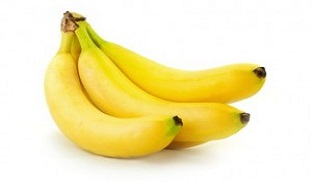Bananas
Bananas, where to find them
Saba Banana

Credit details about the image
Bananas are grown in more than 150 countries, producing 105 million tonnes of fruit per year. The bananas grown for local consumption are generally grown in traditional, extensive systems. Dessert bananas account for 43 million tonnes per year and are of huge economic importance for many countries in the South. Cooking bananas (plantains and others) account for 45 million tonnes.
Locally consumed bananas, which are a staple food in many tropical countries, play a major role in terms of food security. It is believed that the earliest written reference to banana is in Sanskrit and dates back to around 500 BC. Bananas are suspected to be the first fruit in the earth by some horticulturists. Their origin is placed in Southeast Asia, in the jungles of Malaysia, Indonesia or Philippines, where many varieties of wild bananas still grow today.
Philippines bananas exports by country plummeted in value to US$439.9 million for 2015, down drastically by -61.3% from $1.1 billion in 2014. As a world-class banana supplier, the Philippines dropped from third place in 2014 to sixth place behind Ecuador, Belgium, Costa Rica, Guatemala and the United States. Over a five-year time span, the value of Filipino exported bananas declined -6.6% from $471.2 million in 2011. Among continents, Asian countries bought 98% of overall exported Filipino bananas paying $432.2 billion for their import purchases. Far behind in second place were the Oceania countries New Zealand and Australia which, together, consumed 1.5% worth of Filipino bananas shipments. Just 0.3% of Filipino bananas were exported to Europe while 0.2% arrived in North America. The 4-digit Harmonized Tariff System code prefix is 0803 for fresh or dried bananas and plantains.

Africans are credited to have given the present name, since the word banana would be derived from the Arab for ‘finger’. They started to be traded internationally by the end of fourteenth century.
The earliest written reference to banana is in Sanskrit and dates back to around 500 BC. Bananas are suspected to be the first fruit in the earth by some horticulturists. Their origin is placed in Southeast Asia, in the jungles of Malaysia, Indonesia or Philippines, where many varieties of wild bananas still grow today.
Banana Varities

Credit details about the image
Well, in a few words, bananas grow anywhere it’s warm, and everybody loves them, even if it’s cold. The whole European Union is a fan, the United States too, and even the Chinese love them! All the continents are crazy about bananas. It’s one of the few things we all have in common.
Banana is the most fascinating fruit. First of all, a banana tree is not a tree. It’s an herb. An herb that makes fruits, that’s already pretty cool. But that’s not all. The cultivars we eat are sterile, which is why they don’t have seeds inside. Well, there are still traces of seeds, you know those minuscule brownish stuff at the center of the fruit? There it is, long ago those brownish stuff were much bigger. Wild bananas, in the jungle, still have crazy big seeds inside.
Bananas

Details about the image
What the banana scholars tell us is that this fruit originates from South-East Asia. It was first domesticated in Papua-New-Guinea around 8000 years ago. This culture spread around the region, following the exact same path as our Austronesians eating raw fish. So it developped in the Philippines. Then the Austronesians, who brought bananas as they traveled, planted bananas on their way. That’s how the Pacific islands soon started to all have their own banana plants 4000 years ago, all issued from the Filipino cultivar. In Madagascar, bananas arrived a bit later, around 1000 BCE, and those ones seem to come from an Indonesian cultivar.
From Madagascar, bananas spread around the African continent quite quickly. A few centuries later, the Portuguese came and brought the fruits to the Canaries, and then the Carabbeans in the 16th century. There, it spread quite quickly once again. Please follow this link to giver credit for this article: https://goo.gl/6tA15B
Speaking about the jungle, bananas exist there in shapes and colors that you wouldn’t believe. the Papus for instance, they have the best ones. White and green stripped bananas, with an orange pulp. Some are as big as the pinky. Some are gigantic. Some red, or violet. Tasting like an apple, tasting like strawberry. I’ve also read about bubble-gum pink bananas. Yeah, pink, the skin as the pulp. To know more about them will be fun. It’s so crazy, it deserves other articles.
